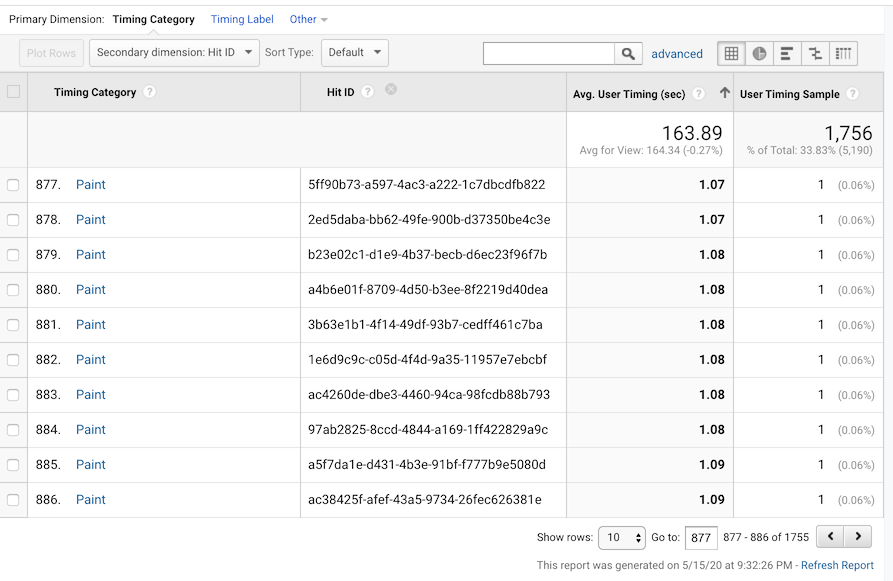Taking Full Advantage Of Search Engine Optimization with Secondary Dimension in Google Analytics
Wiki Article
Unlock Deeper Insights With Additional Dimension in Google Analytics
With the huge area of information readily available in Google Analytics, the application of secondary measurements can significantly enrich your analytical abilities. These extra layers of information offer a nuanced viewpoint that can light up complex details within your main metrics. By purposefully including second dimensions into your analysis, you can uncover important insights that may otherwise continue to be undiscovered. The capability to divide and analyze user behavior with greater accuracy opens up a realm of opportunities for maximizing techniques and boosting efficiency.Comprehending Key Vs. Additional Dimensions
On the other hand, second dimensions enable you to additional study your key dimension data. By including a second dimension, you can layer on extra info to your primary dimension, making it possible for a much more granular analysis. If your primary measurement is the source/medium with which individuals showed up on your website, including an additional measurement like geographic location can reveal where those customers are located geographically.Making Use Of Second Dimensions Efficiently
Effectively using secondary measurements in Google Analytics boosts the deepness and granularity of information analysis, offering important understandings right into individual actions and patterns. By integrating additional dimensions alongside key dimensions, experts and online marketers can dig deeper into the specifics of user communications on their websites. Additional measurements enable customers to segment and filter main measurement data additionally, offering a more comprehensive view of individual habits, interactions, and demographics. This can be especially beneficial when attempting to recognize the effect of specific variables on customer engagement, such as the tools or browsers they are utilizing, the sources of their traffic, or their geographic places.Additionally, secondary dimensions allow customers to contrast and contrast different data factors within a single report, assisting in a more extensive evaluation of individual behavior patterns. By leveraging second measurements successfully, companies can reveal hidden understandings, maximize their marketing techniques, and improve the overall customer experience on their internet sites.
Discovering Typical Second Measurement Combinations
To even more analyze user habits and trends in Google Analytics, it is beneficial to check out typical mixes of additional dimensions. By combining different secondary dimensions, analysts and marketing experts can get much deeper insights right into exactly how various aspects impact and interact website efficiency. Some typical secondary measurement combinations that supply useful insights include assessing web traffic resources with user places to understand where website site visitors are coming from geographically and just how they located the website. Similarly, combining landing web pages with gadgets can reveal which pages execute best on various gadgets, helping in maximizing the website for much better user experience. Additionally, taking a look at customer behavior metrics with second dimensions such as interests or demographics can aid in targeting particular target market sections better. By exploring these common additional measurement combinations, services can discover concealed patterns, determine possibilities for renovation, and make data-driven choices to improve their on the internet visibility.Using Additional Dimension in Customized Information
Making use of additional measurements in personalized records permits for a more comprehensive evaluation of data in Google Analytics, enhancing the deepness of insights gotten. When creating custom-made records in Google Analytics, including additional dimensions can offer a more thorough view of just how numerous measurements engage with each other. This feature allows customers to dive deeper into their data and reveal valuable relationships that may not be instantly obvious.By applying second measurements in personalized reports, individuals can get a far better understanding of their site or app website traffic. Incorporating the main measurement of "source/medium" with the additional dimension of "landing page" can expose which landing web pages are doing best for website traffic coming from details resources. This understanding can help marketers maximize their projects and improve overall conversion prices.

Enhancing Information Visualization With Second Dimension
When exploring data in Google Analytics custom-made records, integrating secondary dimensions not just offers a much more comprehensive evaluation however also improves the graph of understandings through information visualization. By adding an additional measurement to your records, you can enhance the way information is offered, making it easier to identify patterns, fads, and correlations within your website's performance metrics.Additional measurements can help you segment your information additionally, enabling a deeper understanding of customer behavior and communications on your website. When attempting to separate specific variables that may affect your internet site's efficiency., this boosted level of granularity can be particularly helpful.

Verdict
In verdict, leveraging additional dimensions in Google Analytics permits a much more thorough evaluation of data, bring about much deeper insights and more informed decision-making. Secondary Dimension in Google Analytics. By including extra layers of information to key information collections, experts and marketers can discover concealed patterns, patterns, and connections that give a granular view of individual actions and communications. This boosted degree of understanding enables optimization of projects and tailored methods for details audience sections, eventually boosting performance and conversion pricesOn the other hand, additional dimensions permit you to further dissect your key dimension data. By adding an additional measurement, you can layer on extra details to your main measurement, making it possible for an extra granular analysis. If your main dimension is the source/medium via which users arrived on your website, including a second dimension like geographical area can reveal where those customers recommended you read are located geographically. By including secondary dimensions alongside key measurements, marketing experts and experts can dive much deeper right into the specifics of customer communications on their internet sites. Second dimensions enable customers to section and filter main dimension data further, using a much more thorough view of customer communications, behaviors, and demographics.
Report this wiki page